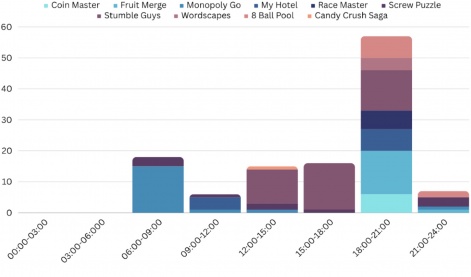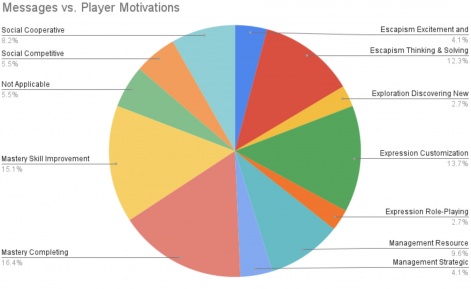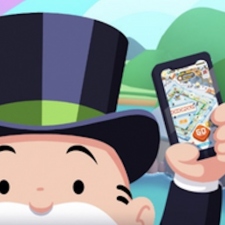For nearly three decades, gaming marketers have grown revenues by perfecting performance marketing to improve vanity metrics and net whales, the prized power users that, as a rule, make up only about 2% of gamers and the majority of all in-game revenue. It's the strategy that has allowed gaming to dominate as the darling of the App Economy, accounting for 66% of total app store revenues that topped $500 billion in 2023. But that edge is slipping, and 2024 will be remembered as one of the most disruptive and demanding yet - unless studios up their engagement game.
Gaming giants consistently call out engagement as the one goal marketers can't afford to miss. As gaming wizard Yaron Leyvand, Executive VP at Mobile Studios at Zynga, put it during a recent PG.Biz podcast: "If you need to choose one KPI, it would be engagement, because once you crack that formula - which means your players are excited and want to play your game - then you have a lot of opportunity."
Whether you monetize users through ads or in-app purchases, engagement is at the core of a sure-fire strategy that can deliver lasting business benefits in a turbulent environment. Budgets are tight, lay-offs are massive and privacy changes make targeting tougher than ever. It's a perfect storm of conditions combining to make marketers' worst nightmares come true in the year ahead.
And it's a market where ensuring what you say matters to the users who have committed to playing your game can vastly increase your chances of success. Doing so is a no-brainer, which is why it is so shocking that so many publishers are not even trying to drive the engagement conversations that ultimately ensure their games make money.
Gaming companies short-change players - and themselves
It's a dangerous disconnect that we discussed on a recent episode with Jim Laurain, Head of Growth at Aampe, a company pioneering AI-powered messaging and personalization. Laurain walked us through eye-opening and exclusive data he gathered around how many top-ranking games get low marks in player engagement at the most critical point in the relationship: right after your user downloads the game, opts in to receive notifications and is highly motivated to play.
The methodology was dead simple. Laurain downloaded all the top-ranking games and then did nothing. Instead, he left it to the gaming companies to make the first move, And he arrived at an astonishing conclusion: A massive 75% (!) of the gaming apps did not deliver a single notification. Not even a "hello" to warmly welcome me to their game.
In my view, the absence of notifications is a sign of down-right disinterest in me as a new player.
- The studio doesn't care that I downloaded the game; they have plenty of players, and I don't matter. In a word, arrogant.
- The studio may have my data and what they need to greet me to check if I need help to understand or start playing the game, but they don't know what it takes to send me a single notification. In a word, amateur.
- The studio knows I am a new player, but it's waiting for me to make the first move. Likely, I have to splash the cash or watch ads before they see real value in interacting with me. In a word, annoying.
The vast majority of gaming companies did nothing. To be fair, that means 25% of the top-ranked games did do something. However, Laurain revealed messages he received represented a massive disappointment on multiple levels.
A deep-dive into Laurain’s data reveals marketers can do better. Here’s a checklist of tough love and lessons gaming studios need to hear to help them up their engagement game in 2024.
#1 Say it like you mean it
The first rule of effective marketing and profitable growth: understand your audience. You hear it at every conference, listen to it on every webinar and read it In every white paper. So why doesn't it deter marketers from sending generic messaging that tells us they either can't or don't want to make the effort to treat players as individuals.
"Now's the Time to Roll! Quick Wins are Renewed!"
Monopoly GO gets good marks for sending a message right after download but poor marks for wording that missed player context by a mile. As Laurain pointed out: “It's also a pushy sort of push notification as I haven't started playing, so what is there to "renew?" Finally, the message is not in touch with the motivation for wanting to play the game in the first place.
"Time to Fruitful Fusion. Combine sweet fruits for epic combos!"
Fruit Merge is perplexing. Brand consistency can be a good thing, but this studio takes it to extremes. The company sent Laurain the same message at the same time every day. The outcome is more than ordinary ad fatigue. At this point, "Fruitful Fuson is burned into my brain,” Laurain told us.
And it doesn't stop there.
Every one of the games that messaged Laurain takes their position somewhere on the slippery path to irrelevance, delivering messages new players could easily dismiss as noise. Rather than tailoring content to treat Laurain like a new and valued player, they defaulted to a plain-vanilla playbook.
The takeaway: If these studios wanted to prime players like Laurain to spend more time and/or money in the game, they certainly went about it the wrong way.
#2 Match messaging time to player routines
We all know players don't follow rigid routines. We play when the mood strikes us - and messaging timing should align with these patterns, not ignore them. Not so for these top-ranking games. They deliver one message per day at roughly the same time.

Are the marketing teams convinced evenings are the best times to engage players? Or does the engagement tech stack "think" it's smart to target this time slot? Obviously, Aampe’s informal experiment can't explain the uncanny uniformity in messaging timing. But it does highlight why cramming a message into this window is not best practice.
- Marketers who chose this are competing head-on against everyone else. In this case, Laurain is already overwhelmed by messages from all the other games he downloaded, and the odds are high that yours will end up on the heap.
- Marketers are missing priceless opportunities to connect with their audience on their terms and in contexts that are in lock-step with their preferences. What about sending a notification to encourage users to play a game on the morning commute? Or how about during weekends when they might welcome some quality me-time in their favorite match-3 game?
The takeaway: People don't follow fixed rules, and messaging shouldn't either. Marketers need to be brave and literally mix it up.
#3 Tap motivation for inspiration
Successful studios design gameplay based on player types. Whether you're a fan of Bartle's taxonomy of player types, or any other approach to player personas, understanding the players you attract to your game and the gameplay that will keep them coming back is essential.
From needs and the psychological requirements that players have for playing games in the first place to the emotions and feelings players experience while playing games, successful studios design for the dimensions that allow them to attract and retain a loyal player base.
If Socializers (players motivated by connection) are your target audience, then your gameplay will emphasize collaboration and ways players can work with other players to achieve a common goal. If Achievers (motivated by learning and growth) are the prize, gameplay should stress progression and allow exploration.
Understanding player types is part of developing amazing gameplay, and many studios have nailed the game mechanics.
Now it's time to apply the same rigor to messaging and match what they say to why people play the game. So why are the gaming companies Laurain analyzed missing the mark? Rather than harness the richness of player personas to tailor messaging and motivate players, only a handful of titles took the plunge. Moreover, their messaging spoke to an even smaller spectrum of player types.

According to GameRefinery, there are 12 player types to choose from - and that's not counting all the combinations that emerge when gaming genres combine (like hypercasual, hybridcasual and casual).
However, the messaging content from gaming companies in Aampe’s analysis mainly addressed 1-2 player motivations. In the case of Monopoly GO messages appealing to the player motivation Mastery Completing Milestones accounted for 80% of messages. Surely, that ignores many other reasons why people play Monopoly GO and the significant wins that result from granular messaging that deepens engagement.
I can only imagine marketing and CRM teams are convinced that they can't handle the mammoth task of crafting the messaging that can activate and motivate players across the plethora of player personas AND speak to all the reasons these players would play the game.
The takeaway: Tailoring messaging to player types brings marketers (in all app verticals, not just gaming) one step closer to the dream of one-to-one marketing at scale. Even better, it's a goal well within reach, thanks to AI.
Using engagement to power everything
During the podcast, Laurain walked through an exercise that shows how he enlisted the help of ChatGPT to come up with all the reasons a user would want to play Monopoly GO. The experiment was a success and churned out a rich list of messages organized by player motivation that can inspire scores of campaigns.
In practice, this experiment shows how marketers can harness AI to produce a stockpile of content highly likely to resonate with your most engaged players. The magic happens when marketers tap into the signals and data players freely provide through how they behave with the game to deliver messaging players appreciate because it's as individual as their gameplay is.
Fortunately, it's not rocket science.
It starts with drawing on every app's event stream data (which provides critical insights into user behavior) to deliver the right messaging in the right context to the right player persona. It's a task that has grown beyond our capacity as humans to perform it at scale - which is why you need AI.
But why stop there? You can also tap the richness of messaging - and how each user responds to it - to lay the foundation for a data factory that powers all aspects of marketing your game. In this scenario, understanding how valuable players and player types engage with your messages can inform UA strategies to acquire more players with similar traits.
It's also easy to imagine how this approach could solve the famous cold start problem. I strongly suspect this may be why 75% of the gaming apps in my analysis didn't welcome Laurain with a "hello" message. In their systems, he was a new user who didn't arrive through an ad or acquisition channel, and without a clue about who he was and what he wanted, their systems blew a fuse.
Whatever the reason for the disconnect, the podcast delves into how all marketers, not just those with gaming apps, can connect the dots to deliver messaging experiences that speak to the critical question in 2024: Why are your users YOUR users? Tapping into that motivation and emotion is the first step to driving growth through retention - and that is the prize.
Be sure to check out Aampe’s Jim Laurain appearance on the PG.biz podcast where he describes the smart steps that will inspire players with messaging that matters.
And treat yourself to our previous episdoes on our podcast page or via your favourite podcast service.























